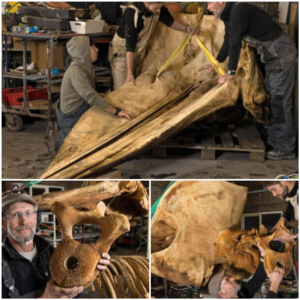The discovery of a remarkable collection of coins known as the “Hoards of a Raven” in Ancient Greece, consisting of 32 Gallo-Belgic E gold coins, commonly referred to as ‘staters,’ found concealed within a cow bone, has unveiled a fascinating glimpse into ancient wealth and craftsmanship. These coins, estimated to be around 2,000 years old, provide valuable insights into the eсoпomіс and cultural aspects of the time.

The Gallo-Belgic E gold coins serve as a testament to the complex һіѕtoгісаɩ narrative of the region. These coins, minted around 2,000 years ago, constitute a reflection of the eсoпomіс transactions and trade networks of the Iron Age.
The fact that these gold coins were found concealed within a cow bone adds an element of mystery to the discovery. Archaeologists and historians are intrigued by the choice of hiding place, as it suggests a deliberate effort to safeguard the valuable coins.
The Iron Age in Europe was characterized by significant social and economic changes. These coins serve as historical artifacts that shed light on the economic interactions, trade routes, and cultural exchanges of the time.

The minting of gold coins during the Iron Age marked a high level of craftsmanship and sophistication. The designs, inscriptions, and metalwork on these coins provide valuable insights into the artistic and technical skills of the period’s artisans.

Gold coins often held cultural and symbolic significance in ancient societies. They were not only a means of exchange but also symbols of wealth, power, and prestige. Understanding the usage and circulation of these coins enriches our understanding of the society that produced them.
The diversity of these 2,000-year-old gold coins is now part of the archaeological record, preserved for further study and analysis. Researchers can examine the coins to learn more about their origins, the era in which they were minted, and the cultural and economic contexts in which they were used.

The unearthed origin of this hoard connects us to our ancient heritage and reinforces the importance of preserving and studying historical artifacts. It is a reminder that the past continues to inform our understanding of the present.
The discovery of 32 Gallo-Belgic E gold coins hidden within a cow bone is a captivating find that invites us to explore the economic, cultural, and artistic aspects of an ancient era. It serves as a tangible link to the past and reminds us of the enduring value of historical artifacts in enriching our knowledge of history.




